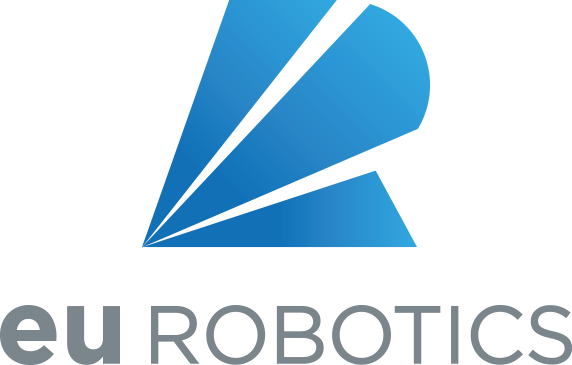Organisers of the ERF workshops have been uploading reports and copies of their presentations from Rotterdam. We want to make sure all euRobotics members get a flavour of the workshops and other sessions that took place in Rotterdam. If you led a workshop, please upload your workshop reports and supporting documents in the relevant folder in the public directory.
Meanwhile, here are two more workshop reports from ERF 2022 in Rotterdam:
- Cloud robotics
- Safety – Challenges and Innovations
WORKSHOP: Cloud robotics
Organisers:
- Stratos Arampatzis (Ortelio Ltd)
- Sascha Griffiths (Noosware BV)
- Giovanni Toffetti (ZHAW).
Speakers/Panellists:
- Stratos Arampatzis (Ortelio Ltd)
- Giovanni Toffetti (ZHAW)
- Silvio Cretti (Fondazione Bruno Kessler)
- Rene Beltman (Lely NV)
- Vassilis Mizaridis (Noosware BV).
Workshop highlights
Some issues discussed during the workshop were that most robotic applications today are distributed to a good extent, so “cloud robotics” can happen even if no public cloud is involved and we are just using a local cluster. Size and placement of components (mobile, robot, edge, cloud) is one dimension; type of connectivity another (LAN, VPN, tunnelling, bridging); ROS version is an issue; the reduction of “sensing” or “sensor” costs that can be achieved by cloud robotics is especially important to companies; Connection to the IoT community, and synergies of cloud robotics with IoT environments are constantly emerging and are quite important to facilitate deployment; “DevOps” considerations (containerization, component and service updates, availability, fleet management, monitoring, diagnostic, orchestration) are another important parameter when deploying cloud robotics applications. In short, cloud robotics applications have widened their scope in the last years, with a corresponding variety of applications and needs.
A full summary of the discussion is given here
Conclusions/next steps
A task for the Cloud Robotics Thematic Working Group of euRobotics is to produce a white paper where we characterize “cloud robotics” in its several dimensions, applications, and trends.
Links to the workshop slide presentations can be found here
WORKSHOP: Safety Challenges and Innovations
Organisers:
- José Saenz, Fraunhofer IFF
- Magnus Albert, SICK AG
- Daniela Cancila, CEA
Speakers/Panellists:
- Daniela Cancila, CEA
- Magnus Albert, SICK AG
- Keshav Chintamani, Tractonomy Robotics
- Christoph Hofmann, SICK AG
- José Saenz, Fraunhofer IFF
- Werner Kraus, Fraunhofer IPA
Workshop highlights
Take away messages from the discussion:
Can we get past safety-compliance and move towards a situation where safety is truly achieved?
When should we use AI and why? AI-based techniques can improve the safety level of the system under study?
As the use-case gets complex, this gets hard for deterministic systems. This is because deterministic systems require a full-scale specification, that is often missing. The challenge is more about complexity than the “pure” nature of algorithms that we’re using.
Bin-picking example: deterministic systems don’t work so well with bin-picking when a single, wrong work piece was inserted into the bin. ML systems (model-free) significantly out-performed model-based systems.
Are there any sensors on the market which contain AI and which are on the market and certified for safety?
Medical diagnostics an example
Can simulation be enough to validate a robotic system?
Audience opinions from different experts: YES!!
Many start-ups don’t even consider safety and are using AI based methods…research needs to link up with them and also consider the new challenges they’re dealing with.
Audience question – is there a place where start-ups can be better reached? The message we want to share is: “Safety is important, you need some consulting and help and there are many resources available.” Is there a different type of project that can better reach SMEs or should it be a kind of FSTP activity? Answer: perhaps the DIHs?
Audience question – how can robotics benefits from AI in terms of safety? Discussion: Recent and prelaminar research studies shows that AI-based techniques can improve the safety level of the system under analysis, for example to control the uncertainty parameter. How can we certify their use for industrial (critical) products?
Insight – for many challenges, the main focus is maybe not safety. For many, safety is something that needs to be taken care of as an attribute as part of the overall equation (performance, floor space, material flow, ergonomics, etc.).
Conclusions/next steps
These discussion points will flow into the upcoming roadmapping process.
TG Safety will hold a follow-up meeting in the autumn.
Links to the workshop slide presentations can be found here.

